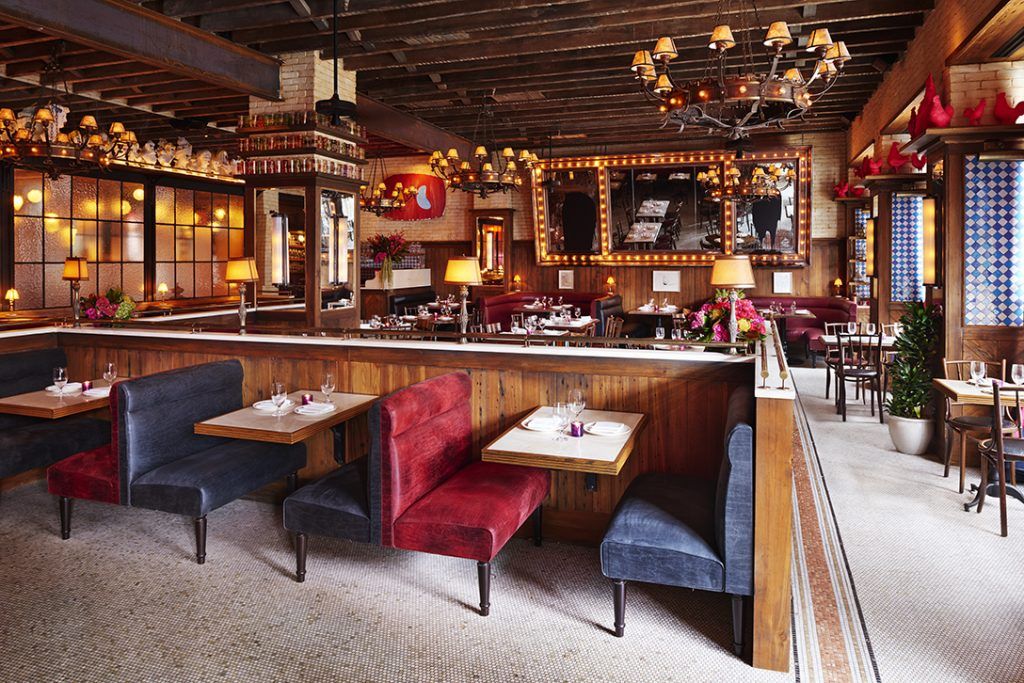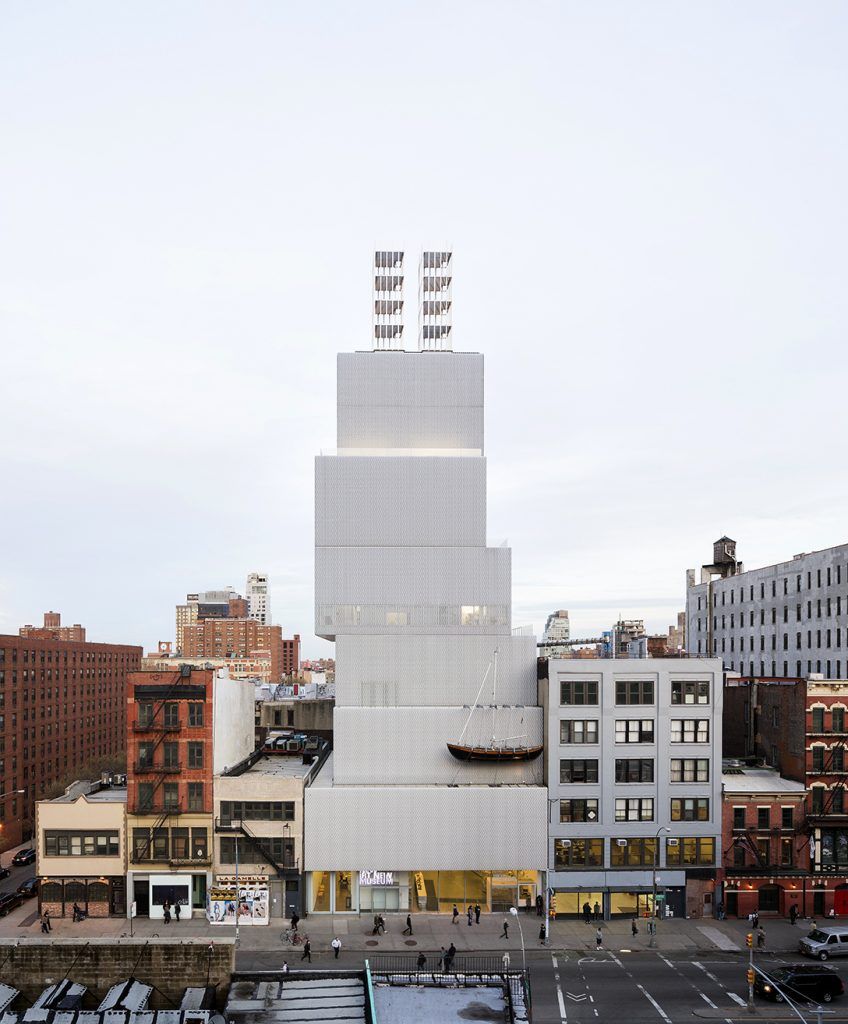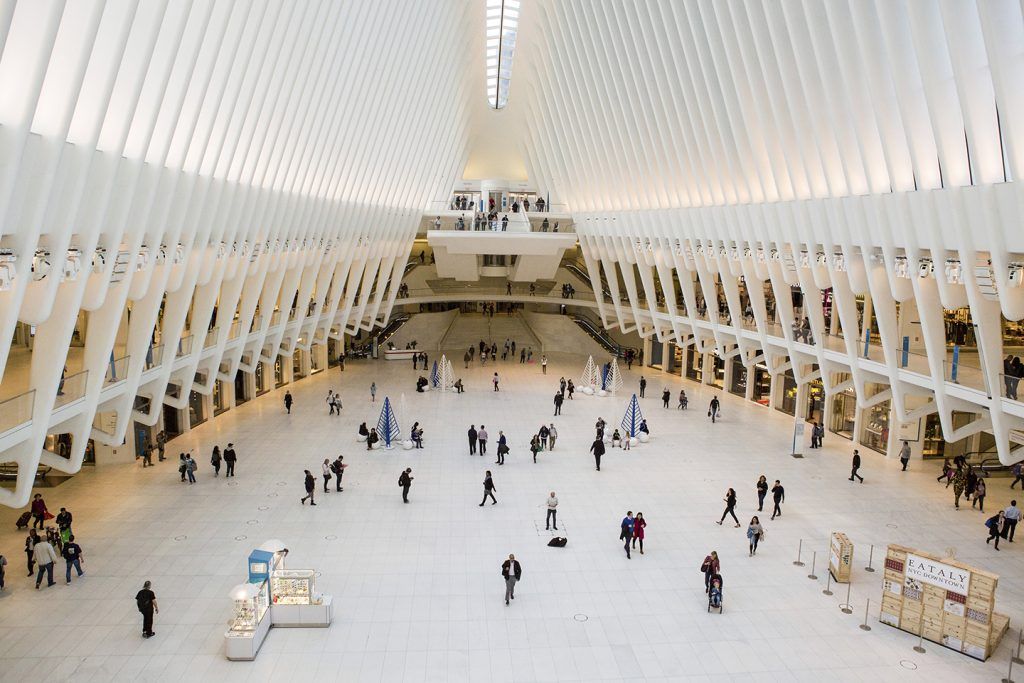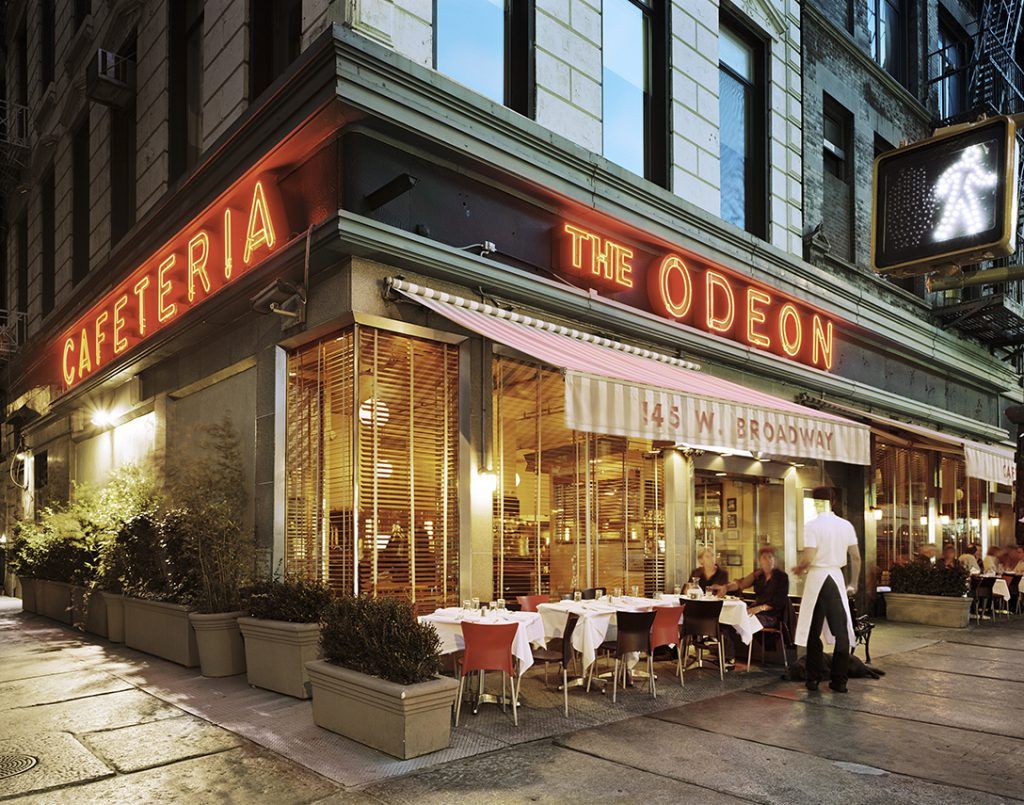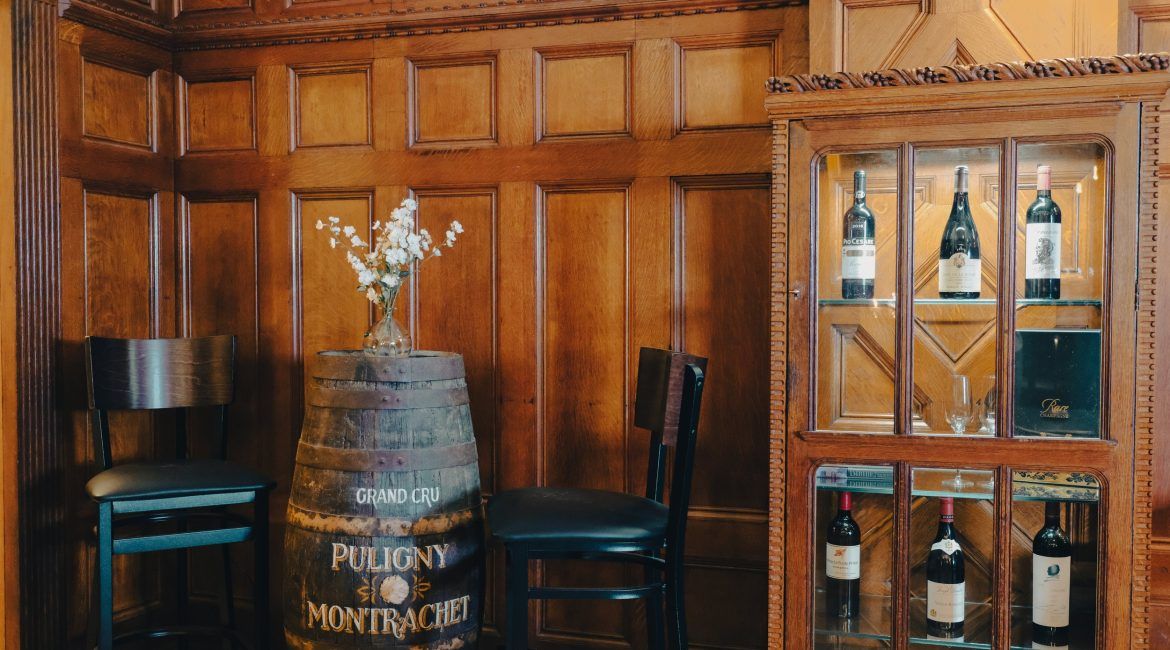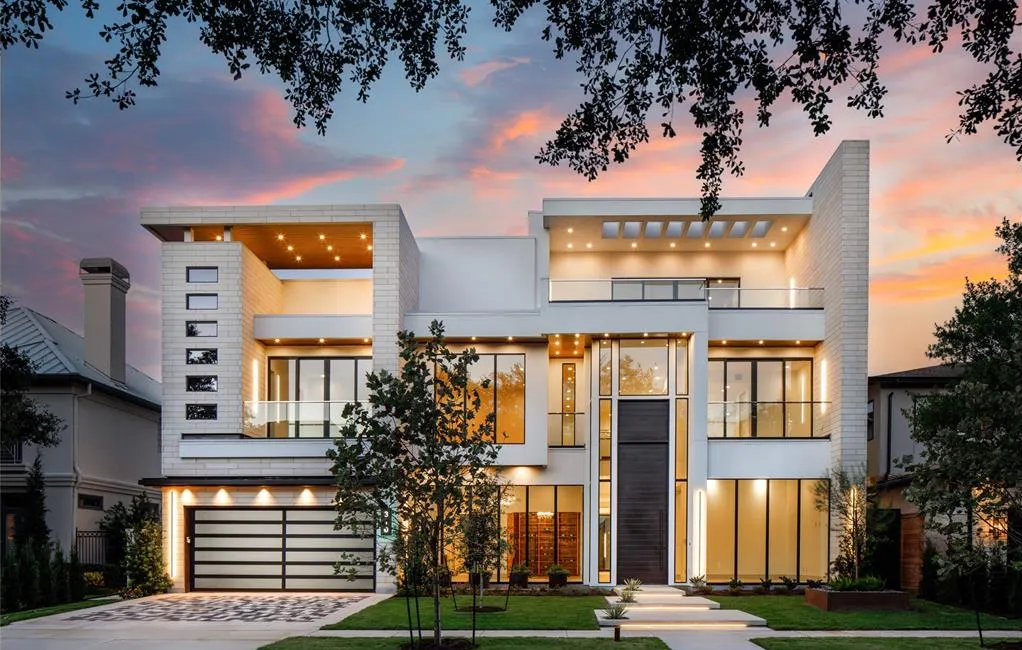Places
New York City’s Downtown Renaissance
by Elliman Editors
October 2020
This former avant-garde outpost is now a world-class cultural center in a world-class city.
—by Bill Van Parys
The intersection of Essex and Delancey Streets on the Lower East Side was never shy of visual drama, jarring though it may have been. But the view has recently been elevated well beyond its gritty roughand-tumble sidewalk heritage and into the ethereal skies, heightened by world-class architecture. Works by Bernard Tschumi, Eran Chen, and Handel Architects now ring the intersection. A glance downward into the cascading, light-filled spaces of SHoP Architects’ reimagined Essex Market reveals bespoke food stalls, a far cry from barrels of pickles in the market’s earlier incarnation across the street. Down the block sits the new headquarters of the International Center of Photography (ICP), also by SHoP, its entryway facade mimicking a Polaroid frame, while mere footsteps to the west towers the SANAA-designed New Museum , where a recently announced angular extension by OMAShohei Shigematsu and Rem Koolhaas will soon confirm Downtown’s architectural and cultural coming of age.
The Ludlow Hotel
Those looking to understand what precipitated Downtown’s arrival as a world-class cultural center need look no further than a stone’s throw up Ludlow Street, near the interior-design high temples of Ludlow House, Ludlow Hotel , and Hotel Indigo. There, within the Richard Taittinger Gallery, one will find Sharon Phair Fortenbaugh, sales director. Phair Fortenbaugh, who started her career working for Interview with Andy Warhol at the Factory, has always had her finger on the pulse of Downtown cool, her life driven by art, music, and fashion. (A devotee of the legendary Downtown art-haunt The Odeon since 1983, she likes to quip that she watched Tribeca as it “went from Birkenstocks to Birkin Bags.”) She credits the arrival of institutions such as ICP, the New Museum, and, appropriately, the Brandt Foundation—former publisher and owners of Interview, who recently set up shop in a converted electrical substation once owned by the minimalist artist and sculptor Walter de Maria on nearby East 6th Street—as having ignited tasteful development similar to the Whitney’s arrival in the Meatpacking District a decade ago.
The New Museum
“Institutions really, really change a neighborhood,” Phair Fortenbaugh notes. “Because with museums come not only art lovers but collectors and patrons, along with wonderful things like restaurants, hotels, retail operations. And those institutions plan for years in advance and don’t make decisions lightly. So you know when they’ve come to the neighborhood, they’re in it for the long run and are here to stay.”
GOOD BONES
What conspired to lure the institutions into committing to Downtown in the first place? Good creative bones, as real estate lingo goes: distinctive neighborhoods rooted in 18th- and 19th-century industry and immigration, with arty, outsider heritages; a diverse residential population fond of progressive, civic-minded politics; and a penchant for urban pioneering and reclamation that reshaped the way many New Yorkers live today, or at least would like to.
“As the capital of cultural movements, Downtown NYC has always been a world-class cultural center, but in less formal ways,” observes Lindsay Barton Barrett of Douglas Elliman. “Think Stonewall, Beat poetry, and avant-garde theater, and a place where art emerged— Warhol and Basquiat, CBGB, Bowery Opera, and on and on. Its history is one of acceptance and, as a result, experimentation, in art, food, music, and fashion. The architecture contributes to that due to its diversity. You have a plethora of housing types, from warehouses and industrial spaces to everything in between. ‘Loft living’ has moved Uptown, but even the concept of open-plan living is completely ‘Downtown.’”
The Oculus
Perhaps the most exciting aspect of Downtown architecture and design today is how the new projects complement the past while creating a bridge to the future for neighborhoods. “For my money, three forces drove the maturing of Downtown: the artists who pioneered it, the preservationists who saved it, and the architects and developers who often made bold choices that maintained the edgy feel of the area,” says Erik Torkells, the founding editor of the influential Tribeca Citizen. “Downtown may not be the architectural hit parade flanking the High Line, but amazing buildings—Frank Gehry’s 8 Spruce Street, Herzog & de Meuron’s 56 Leonard, the Spring Street Salt Shed, The Oculus at the World Trade Center—are everywhere you turn, pushing the city forward instead of just replicating its past. And surrounding them, providing a luscious contrast, are fantastic buildings from days of yore, all spiffed up and looking better than they ever have.”
The Odeon Restaurant
One such property of yore that’s looking better than ever can be found in SoHo at 421 Broome Street, where a 12-room penthouse with four beds, seven baths, six landscaped terraces, and a hot tub spans about 8,000 square feet and has about 4,000 square feet of outdoor space. J Eric Becker of Douglas Elliman describes it as “a property that feels like a house with world-class detailing and finishing comparable to something one might see in London, yet located in a landmarked cast-iron SoHo building.” There’s no risk of Downtown losing its edge. As Becker notes, “While there has been some gentrification throughout most Downtown neighborhoods, there is still a distinct multicultural melting pot feel that keeps every day Downtown feeling different than yesterday.”
ART CENTER
Part of that feel has to do with Downtown’s vaunted street life, which remains New York City’s cultural calling card worldwide. The fashionable juxtaposition of all stripes on Downtown sidewalks continues to inspire artists and designers (Virgil Abloh’s Fall 2019 Collection for Louis Vuitton was reputedly inspired by the intersection of Ludlow and Rivington Streets) and provides arguably the city’s most affordable education and entertainment. “I walk to work and home [in Battery Park City] almost every day through Tribeca and SoHo and the Lower East Side, as I’m so inspired by the people I pass and also the presentation of so many of these incredible shops and shop windows,” Phair Fortenbaugh explains. “It’s all just eye candy for me.”
Hudson River Park
The other prime location for people-watching Downtown these days is within the reclaimed waterfront parklands throughout Lower Manhattan, stretching from the Hudson River Park through the elegantly refurbished Battery Park and its urban-farm gardens up through the John V. Lindsay East River Park. Once primarily industrial wastelands, today’s cutting edge environmental and resilient landscape designs, coupled with the Greenway cycling paths and expanded ferry service, go a long way toward addressing what had been a market shortcoming. “One thing that had been lacking Downtown was green space,” Barton Barrett says. “That has been remedied and then some with world-class park space, entertainment venues, and an escape from the city streets.”
“That’s the really big change Downtown,” Phair Fortenbaugh concurs. “It’s become a great place for families to raise children. The core attributes are all still there—creative, enthusiastic, uninhibited in many ways, fashionable, joyful—but the parks and gardens are now world class, and there are great amenities for kids, many of them free. There’s still enough authenticity to the neighborhood—with all of its nightlife and artistic freedom and art come the style and the design and the people who wish to live around that.”
Or as Torkells puts it: “People have always moved Downtown because they had a good eye; they could appreciate it. And, not unimportantly, they liked what it said about them. That’s as true today as it was in 1990.”
And the beat goes on.
Find your next home Downtown today.
